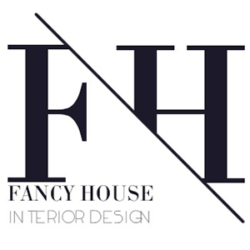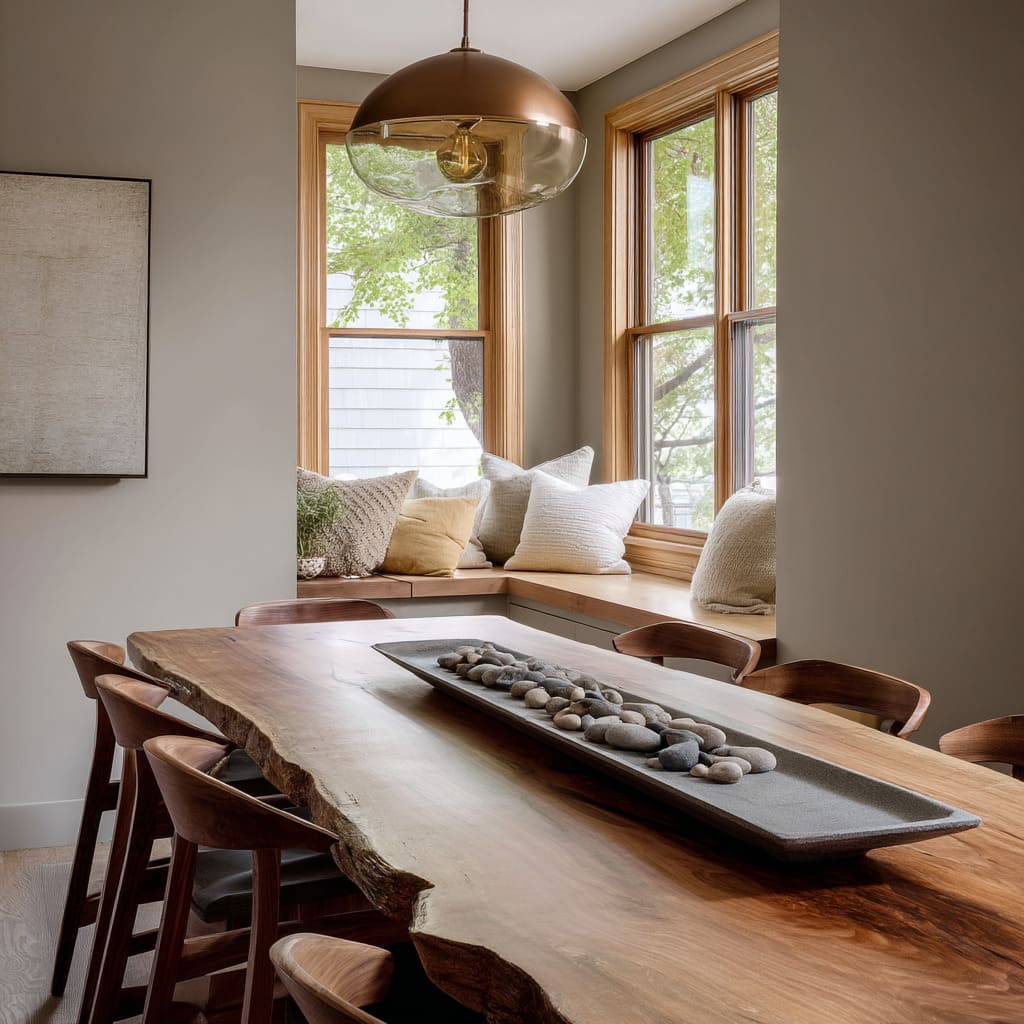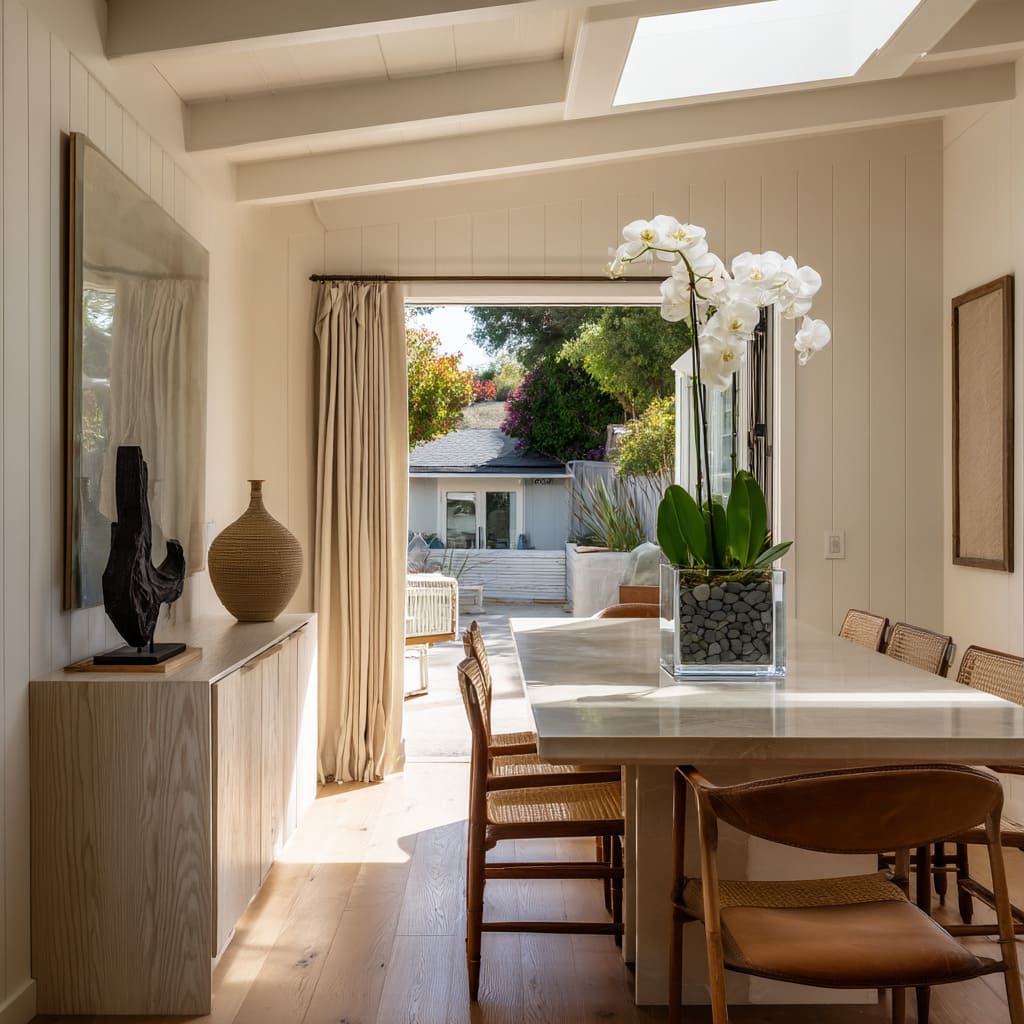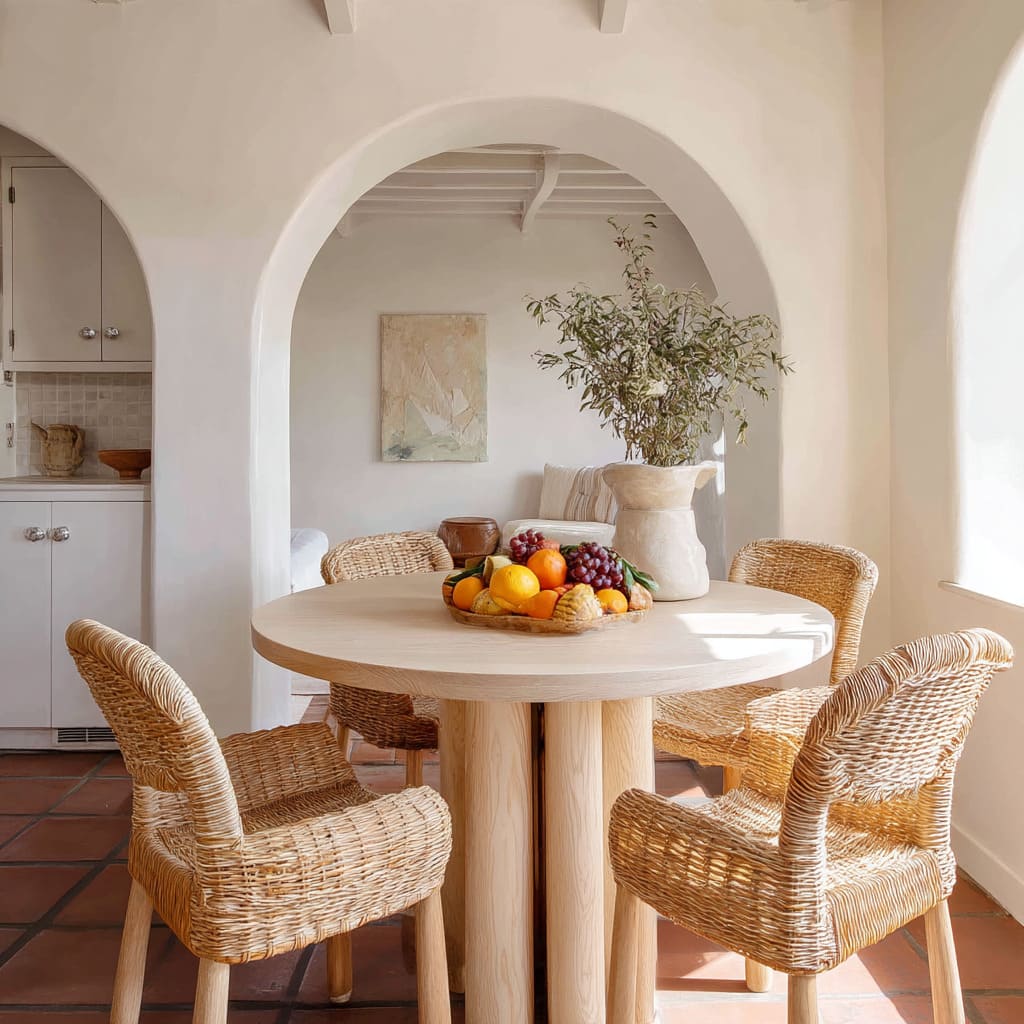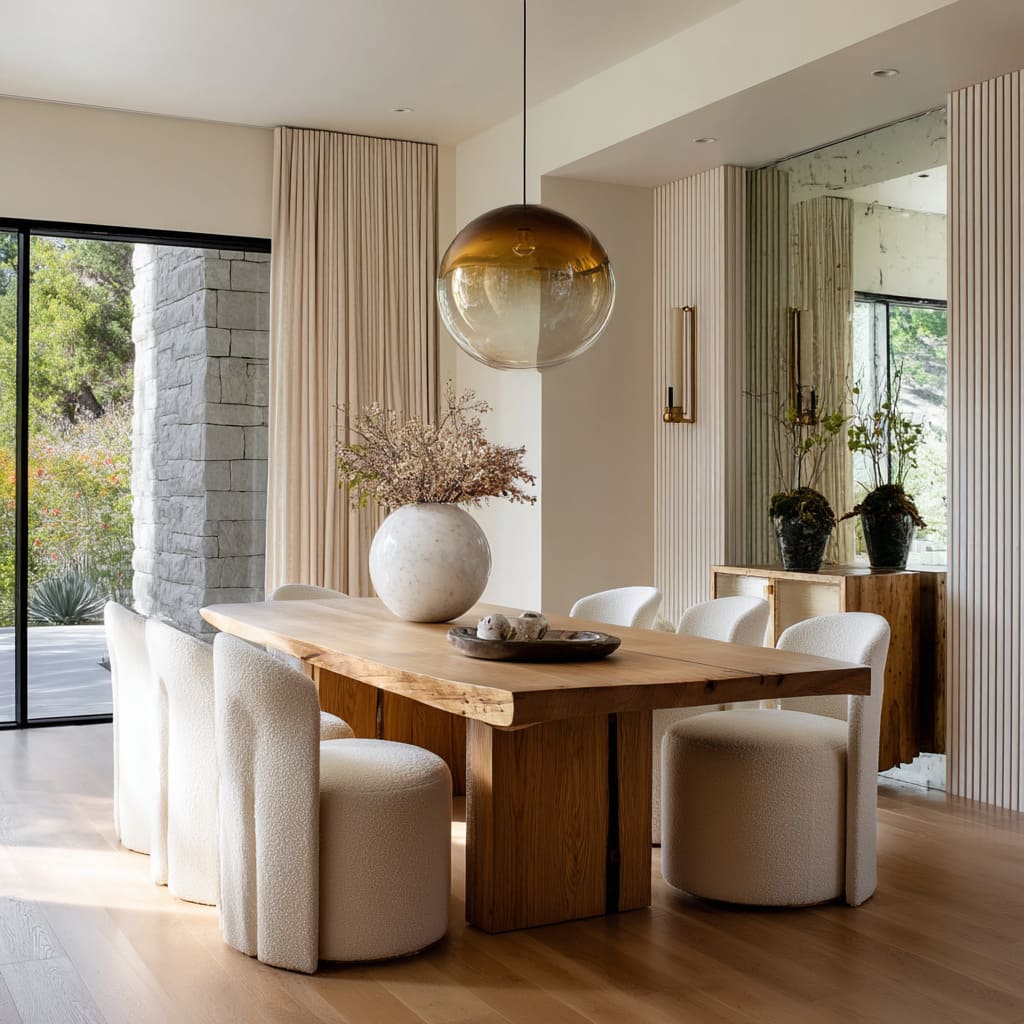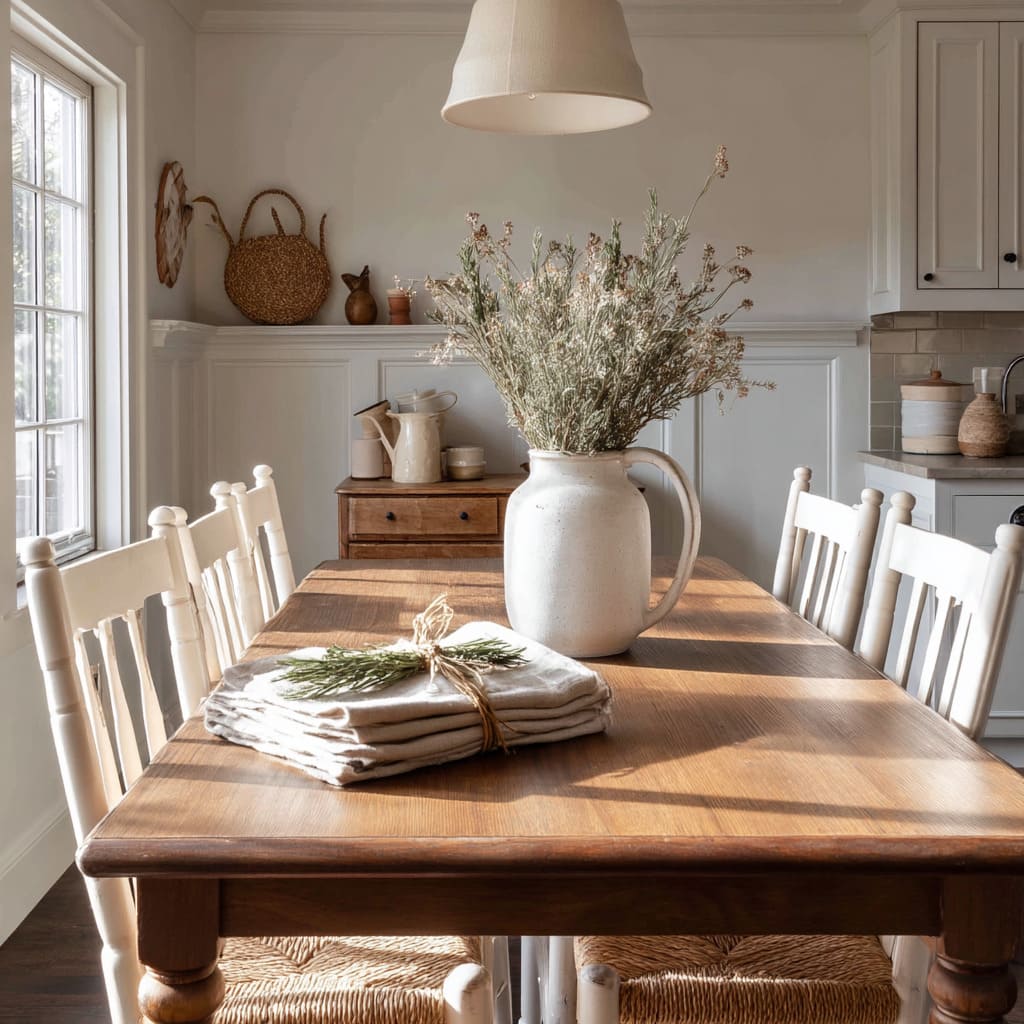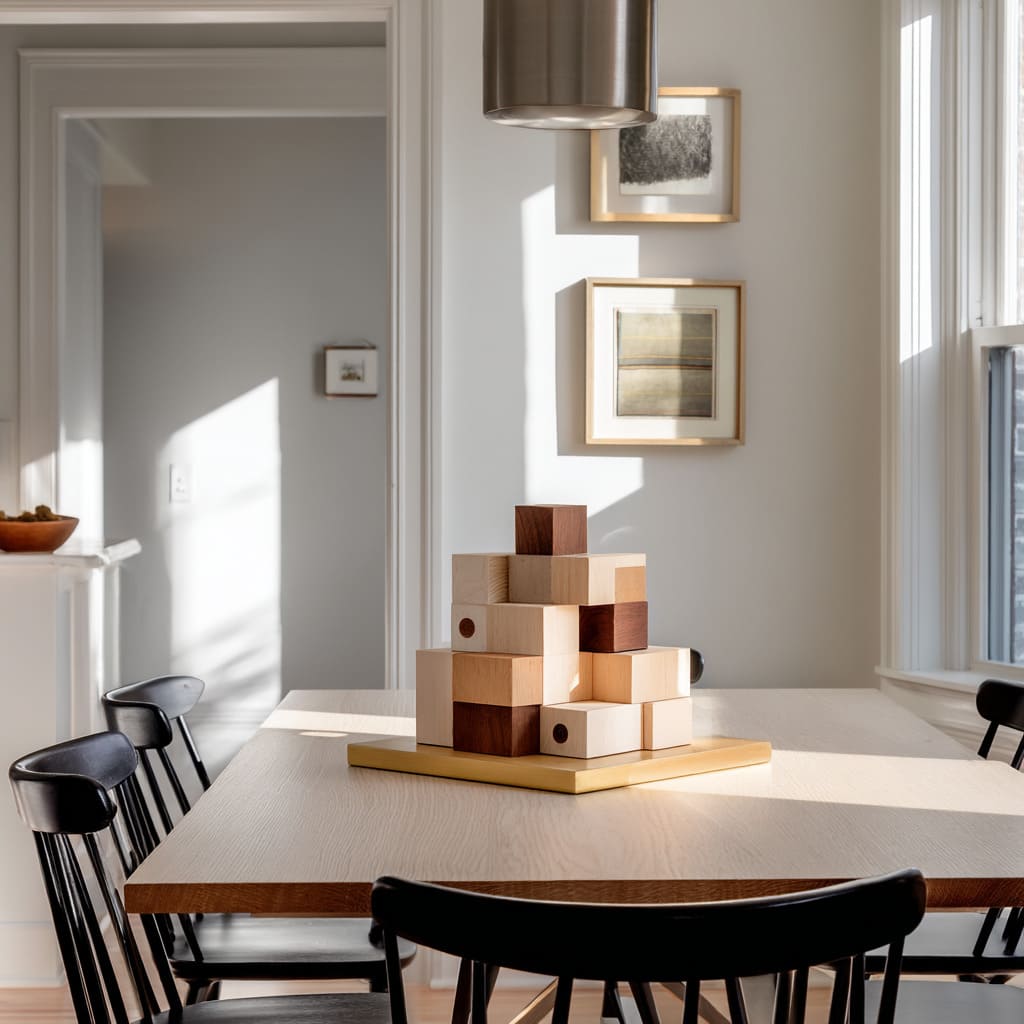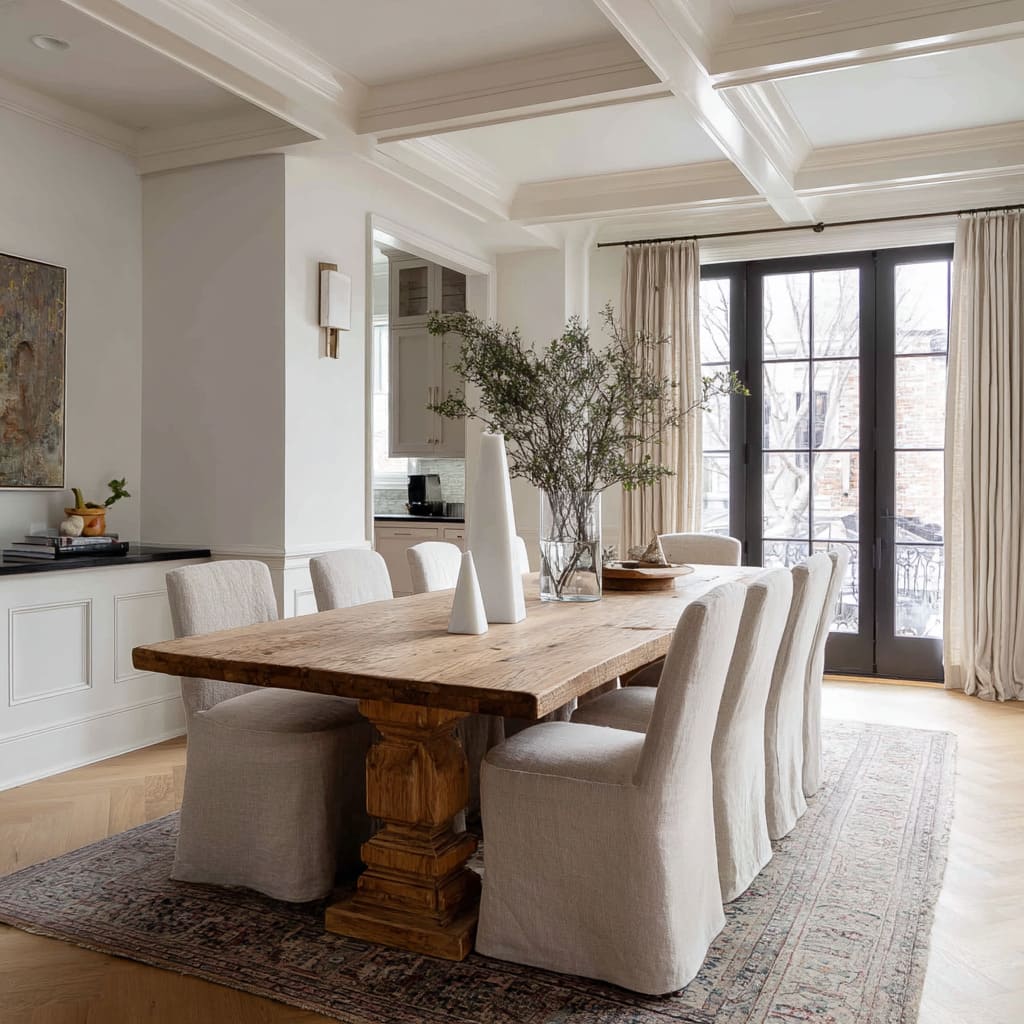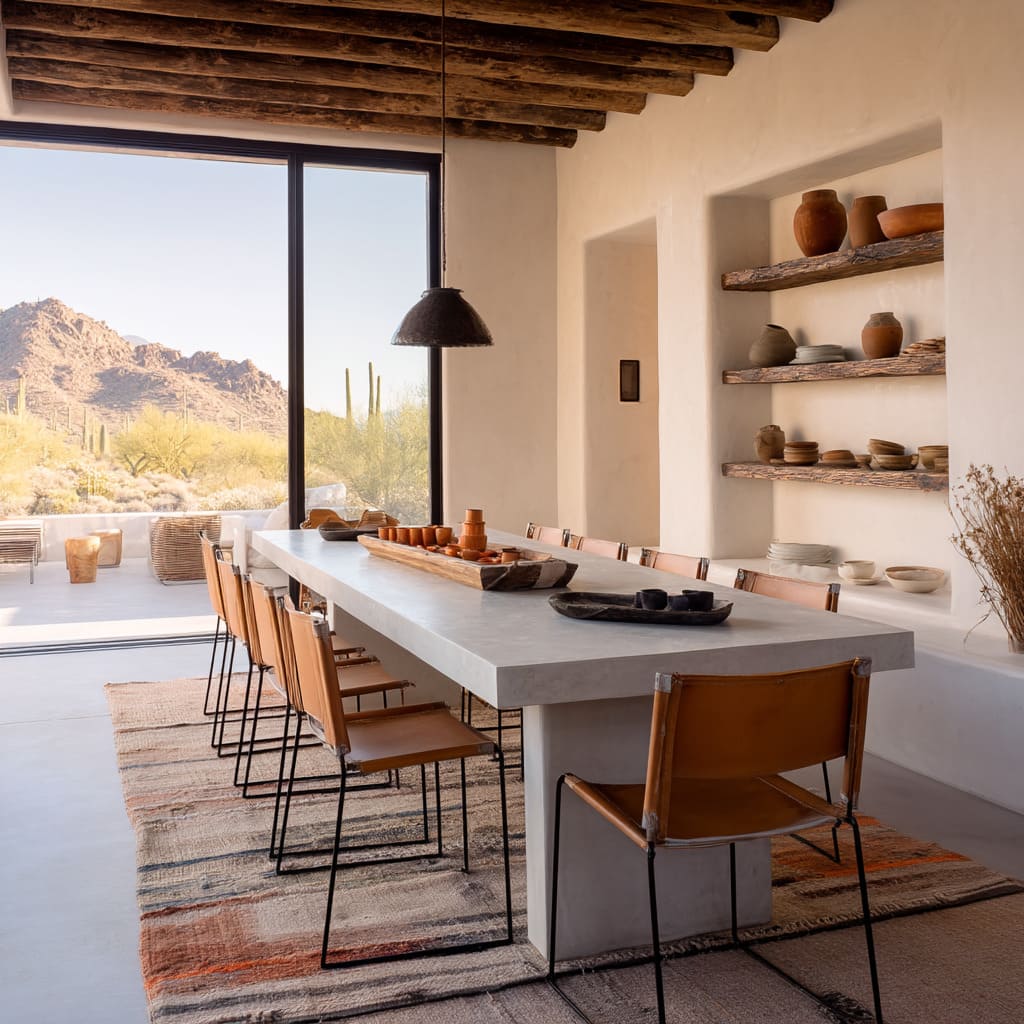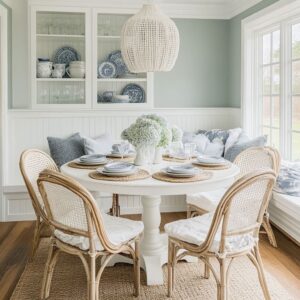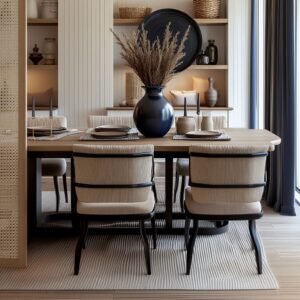There’s been a noticeable shift in how dining tables are styled today. Instead of treating the surface as a platform for decoration, many are now composed more like interiors in miniature.
A table no longer needs height or flourish to feel finished—it needs rhythm, pause, and intent. Centerpieces are becoming less about standout pieces and more about spatial flow.
Some are built from soft vertical tension—objects layered in height to move the eye gradually. Others are entirely horizontal, read like a landscape or a still moment in time.
The focus isn’t on the identity of a vase or bowl, but on how it behaves: how it reflects light, balances with nearby textures, or echoes a shape across the room. Texture now carries more weight than color.
Shadow is styled like an ingredient. Materials are often chosen to contrast not in hue, but in weight and tone—stone beside linen, brass near clay, glass over water.
There’s humor folded in, and references tucked between familiar forms. This approach brings the table closer to sculpture—a quiet balancing act between motion, memory, and stillness.
And that’s where today’s most thoughtful styling begins.
Objects as Landscape and Movement Mapping
Modern centerpiece styling often breaks away from the traditional idea of a single decorative object placed at the center of the table. Instead, the tabletop becomes a narrow field of visual movement—more like a small, framed landscape than a display surface.
The shift is subtle, but it redefines how we look at and interact with what’s placed there. These compositions guide the eye in a horizontal rhythm.
Stacked sculptural discs, a folded brass plane, or even a line of fruit and branches all stretch across the table like terrain. The setup is no longer anchored by a vertical showpiece—it’s spread deliberately across space, encouraging the viewer to read it from left to right, like a scene unfolding in motion.
Take the example of the long tray with river pebbles fading from dark to light. This gradient isn’t random—it implies direction, turning the table into a track for the eyes.
Even while seated, the viewer naturally follows the fade, building a quiet sense of flow that gives the surface a sense of life. Then there are cases where elevation is removed altogether, like a botanical panel set beneath a glass inlay.
Instead of rising above the table, it pulls the viewer downward, drawing people to lean in and observe details closely. That shift in eye level changes the dynamic of the conversation space, encouraging a shared pause rather than a glance from afar.
These aren’t just centerpieces—they’re landscapes that shift focus, flatten perspective, and shape the pace of how a table is experienced. And they point toward a broader shift in dining room table centerpiece ideas: from styling to storytelling.
Crafting Shadow, Not Just Form
Some of the most compelling table arrangements don’t rely on color or ornament. They rely on the presence of shadow.
In rooms with limited palettes or restrained architecture, the way light interacts with object edges becomes part of the design itself. Folded metal sculptures, for example, don’t only carry shape.
Their angled forms catch and release light with every shift in the day. Shadows stretch between the folds like drawn lines, filling the negative space with motion.
On a matte or dark tabletop, these silhouettes become temporary features—appearing and dissolving depending on angle and time.
Another approach uses polish rather than form. Stacks of brass cubes, arranged with precision, reflect light like they’ve been positioned for that single purpose.
Though they may be small in scale, their finish allows them to radiate presence without visual noise. From one view, they might read as solid.
From another, they scatter light like a prism. This kind of setup doesn’t need height or color—it pulls visual strength from how it reacts to its surroundings.
These shadow-driven compositions are easy to overlook at a glance, but they often carry the emotional temperature of the room. They define softness or sharpness, stillness or motion—not by being seen directly, but by shaping what’s around them.
That approach sits at the heart of many refined dining table decor ideas today: styling that doesn’t shout, but instead shifts with the light and reveals its detail slowly.
Centerpieces as Dialogue with Room Architecture
A thoughtful dining table centerpiece doesn’t float in isolation—it often speaks directly to the forms, lines, and shapes that define the space around it. These arrangements aren’t just placed; they’re placed in context, as part of a quiet back-and-forth with architectural rhythm and structural features.
A scorched wood slab layered beneath a bronze tray, for example, doesn’t only sit on the table—it reaches upward, visually linking to exposed timber beams above. The grain, the charred texture, and the metallic warmth form a material response to what’s happening overhead, reinforcing vertical continuity from floor to ceiling.
The result is a kind of architectural conversation: a line repeated, a surface echoed, a finish reflected.
Similarly, when a polished marble sphere filled with dried florals is paired with round-back boucle chairs and an arched pendant lamp, the composition forms a room-wide ripple effect. The curve of the centerpiece becomes the origin point for multiple soft echoes throughout the space, creating a circular rhythm that can be felt even when not consciously noticed.
This approach reframes the purpose of a centerpiece. It stops functioning as a focal accent and starts behaving as a link—a visual anchor that responds to the structure it’s surrounded by.
In this way, the best centerpiece ideas function less like decoration and more like replies to the room’s architecture, completing patterns rather than interrupting them.
Misuse of Everyday Items as Conceptual Gesture
Some of the most quietly powerful dining room table decor ideas come from using everyday objects in ways that feel unexpected—but intentional. This isn’t novelty for novelty’s sake.
It’s about elevating the familiar by placing it into new visual roles. A bowl filled with oversized yarn balls may read as casual and playful, but it carries sculptural weight.
Their rounded forms and layered threads mimic the volume and rhythm of fruit, yet their softness and crafted texture tell a different story—one of handmade living, domestic warmth, and personal expression. It’s decorative, but it’s also a kind of visual inside joke.
In another setup, a knitted throw replaces the traditional runner, not as background but as structural support. Its thickness and texture create a soft rise beneath a single vase, almost like fabric turned into architecture.
It doesn’t drape loosely—it’s folded and placed with the same care one would give to a slab of marble or a metal tray. This kind of styling steps away from formality and enters a space where utility and composition blur.
Ordinary items become sculpture—not by changing their shape, but by shifting their context. It’s a move away from polished perfection and into a kind of lived-in intentionality, where the softness of the home can be read through the materials on the table.
Centerpieces as Dialogue with Room Architecture
Not all centerpieces are meant to stand alone. Some are built to speak with the structure around them—a quiet exchange between furniture, lighting, materials, and form.
These pieces don’t shout to be seen. Instead, they respond to what’s already there, completing unfinished lines, repeating textures, or echoing shapes across the room.
Think of a scorched wood slab layered beneath a bronze tray. This isn’t simply a dark and moody base.
It mimics the finish of exposed ceiling beams, creating a vertical alignment that connects tabletop and architecture in one visual line. The centerpiece here becomes an extension of the ceiling—not an addition, but a continuation.
In another example, a white marble sphere filled with dried branches becomes the source of a ripple effect. Its soft curve is echoed in the rounded backs of boucle chairs, the shape of the pendant lighting overhead, and even the subtle arch of a doorway nearby.
Each element feels connected—not matched, but tuned to the same shape language. This kind of styling creates what feels like a closed loop of visual energy.
The centerpiece is no longer just an ornament—it becomes a response, one that reflects the room’s geometry back to itself. This strategy lies at the core of many of today’s most thoughtful dining table centerpiece ideas: building resonance between surfaces, instead of layering contrast.
Misuse of Everyday Items as Conceptual Gesture
A different kind of creativity comes into play when common household objects take on unexpected roles at the center of the table. These gestures feel personal, slightly humorous, and grounded in craft—yet still sculptural enough to hold their own in a styled setting.
Take a bowl of oversized yarn balls. They immediately suggest softness, warmth, and a connection to handmade life.
But their placement is calculated. The roundness mimics fruit, and the textures echo knit throws or upholstery in the room.
In this context, they carry weight beyond their function—they comment on the home itself, not just decorate it. Then there’s a chunky knit throw laid across the table like a runner.
Here, the textile isn’t a passive background. It’s used like architecture—folded, built up, and placed with intention to elevate a vase or tray.
The throw becomes a base layer, thick and structured, grounding the composition and softening the harder materials above it. These are not typical dining room centerpiece ideas.
They resist formality. They aren’t shaped to impress, but rather to connect—through texture, familiarity, and thoughtful misplacement.
And that shift from ornamental object to recontextualized item brings a quiet energy to the table, one that’s far more tactile than visual alone.
Vertical Hierarchy Used to Direct Visual Tempo
Visual rhythm at the dining table doesn’t come only from symmetry or repetition—it often builds through height sequencing. Tall, mid, and low elements are placed not just for variety, but to guide the eye in specific ways.
This isn’t about random layering—it’s about shaping the pace of how the surface is visually read. Take the pairing of alabaster obelisks with a glass vase.
Each piece stands at a different height, and they’re spaced unevenly. This staggered verticality causes the gaze to step upward in intervals—moving slowly, instead of jumping in a single leap.
That tension between objects, the gap in heights, introduces a rhythm that mimics musical pacing: pause, rise, hold.
Then there’s the orchid in a smoky acrylic box. Its base is barely visible—almost swallowed into the table—while the stem stretches with clean authority far above everything else.
That imbalance forces the gaze upward, creating a single-point vertical accent in an otherwise low-slung space. It’s a move that changes posture; guests find themselves looking higher, leaning back slightly, noticing the air above the table as part of the composition.
These shifts in elevation do more than decorate. They shape how fast or slow a space feels, how grounded or airy the surface becomes.
In rooms built for pause, conversation, and observation, this vertical control becomes a subtle—but central—tool. This idea often drives the most thoughtful dining table centerpiece ideas for everyday use—arrangements that slow the eye, create moments of lift, and add presence without excess.
Controlled Mismatch as a Visual Language
What appears casual is often intentional. Mismatch, done with precision, adds life.
A curated sense of imperfection keeps the table from freezing into a showroom still life. Instead, it breathes.
It shifts. It feels touched.
A standout example is a tray filled with handmade ceramic cups, none of which match in size or glaze. The collection is balanced not by uniformity but by shared character—soft rims, matte textures, and a muted earthy palette.
The visual effect is one of unity through difference. It doesn’t look random, because it isn’t.
It’s harmony made from variation.
Or consider a fruit bowl filled loosely with in-season produce—grapes leaning over a tangerine, a stem crossing a pear. Each piece is imperfect in size and hue, and none of them sit symmetrically.
Yet the range is controlled: warm reds, mossy greens, soft yellows. The bowl feels alive because the placement isn’t fixed—it’s a carefully built illusion of ease.
These are not cluttered arrangements. They’re studies in restraint and realism, making the table feel used, prepared, or in motion—rather than staged.
This kind of styling brings freshness to the idea of modern dining table centerpieces: designs that speak softly, but with character, through shifts in scale, placement, and finish.
Meaning Carried Through Material Juxtaposition
Some of the most expressive modern dining room table centerpieces draw their strength not from color or pattern, but from the deliberate contrast between materials. These setups don’t compete with their surroundings—they sharpen their impact through restraint, by placing opposites next to each other and letting that tension tell the story.
Think of a jagged crystal cluster paired with soft floral sprigs. This isn’t an aesthetic decision—it’s a layered message.
One is dense, cool, and mined from the earth. The other is delicate, brief, and air-filled.
Together, they form a composition that feels like a quiet metaphor: strength holding fragility, or the enduring paired with the fleeting.
Then there’s a smoky mirror box holding a single orchid stem. The hard, reflective surface almost disappears into the table, while the soft arc of the orchid floats above it.
One part pulls in the room, folding it into reflection. The other reaches out into space.
This balance of transparency and solid mass, structure and growth creates a spatial dialogue that feels deeply controlled, yet never stiff. These aren’t dramatic arrangements—they’re thoughtful.
Their tension comes not from excess, but from precision. A cool stone next to raw linen.
A matte ceramic dish next to a polished wood bowl. Each piece works because it answers what it’s next to.
These table settings aren’t just decorative—they’re built like sentences: one material responds, the next completes the thought.
Narrative Inference Instead of Literal Decor
Some centerpieces aren’t there to be admired as static compositions. Instead, they suggest that something has happened—or is about to.
These are visual cues wrapped in everyday gestures, subtle enough to feel believable, but placed with too much care to be accidental. A stack of napkins tied with twine and topped with a sprig of rosemary doesn’t say “styled.
” It says “the table’s being set. ” It feels like the room is caught in the middle of a rhythm—half-prepared, half-lived-in.
The materials don’t perform; they imply motion, the kind that happens just before or just after people gather.
Then there’s a low tray holding a collection of mismatched handmade mugs. Each one feels recently touched.
The glaze variations, the slight asymmetry in shape—they read as real. The scene could be post-breakfast or pre-conversation, but it invites imagination.
It doesn’t decorate the table—it pauses a moment on it. These are the kinds of details that elevate a dinner table centerpiece without increasing its size or complexity.
Instead of offering objects, they offer context. They give the table a role—not just as a place to put things, but as a surface that remembers what just happened and hints at what might come next.
This kind of quiet storytelling carries weight in spaces that don’t need more stuff, just more meaning.
Subtle Use of Repetition as Pulse
Repetition, when applied with control, can do more than create pattern—it can act as a visual stabilizer. Especially in rooms where natural materials dominate, like live-edge wood tables or irregular stoneware, repeating shapes or forms bring in a kind of quiet pulse that helps organize the scene without stiffening it.
Take the example of a vertical totem built from 18 smooth ceramic discs, each slightly different in surface finish but unified in shape. Together they form a spine—a still axis that rises gently from the middle of the table.
Around it, chairs curve, fabrics shift, and light moves—but the centerpiece remains a steady line that grounds the visual motion around it.
In another space, a brass cube grid—precise, low-profile, and geometrically strict— holds a similar function. It offers a pause in a room where most textures are raw and soft.
The grid doesn’t overpower. It simply restores balance.
Its presence is subtle, but it corrects the natural irregularities of the table’s surface by introducing a quiet, repeating rhythm. This kind of repetition doesn’t demand attention.
It offers a pulse—a tempo that calms the more chaotic or flowing materials nearby. That’s why it works so well in center pieces for dining table arrangements that aim to feel alive but not messy.
The repetition brings discipline without erasing texture.
Quiet Humor and Symbolism Hidden in Form
Some table centerpieces lean into seriousness—others let meaning unfold more slowly. In these compositions, humor and symbolism are tucked into form, giving the setup a second layer that might only register after a pause.
A perfect example is a glossy black bowl filled with fruit painted in antique gold and bronze. At first glance, it looks formal—almost decadent.
But the fruit isn’t fresh, and the shine feels theatrical. It’s a nod to still-life painting, but it’s also a wink at excess—a parody dressed in polish.
The table becomes part gallery, part joke. The message lands in silence, not laughter.
Then there’s a glass trough of pebbles submerged in water, inset into the table’s center. It reads as decor, but acts like a miniature riverbed.
It mimics nature—not in content, but in placement. A static object is turned into motion.
Light ripples across the surface, and suddenly the table isn’t just a table—it’s a landscape with storyline. These kinds of pieces shift the focus away from decoration and into meaning.
They ask to be read, not just seen. And in the context of everyday simple dining table centerpiece ideas, this approach allows even the quietest objects to carry layered intent—without clutter or excess.
It’s subtle, but memorable. Thoughtful, but unassuming.
The kind of styling that lingers, even when the table is cleared.
Conclusion: A Shift Toward Composition, Not Decoration
The most defining change in today’s dining table styling isn’t found in the objects themselves—it’s in the way they’re used. There’s a clear turn from treating centerpieces as accessories to treating the table surface as a place for quiet spatial composition.
It’s not about putting something pretty in the middle. It’s about shaping a scene that fits, responds, and even listens to its surroundings.
A vase isn’t chosen simply because it’s a vase. It’s placed for what it does—how it pulls light, how it echoes a curve nearby, how it anchors one end of a line or bridges between two materials.
The best center pieces for dining table layouts now act like architectural details: understated but highly sensitive to proportion, mood, and rhythm.
These compositions are built from awareness. Shadow, texture, tension, and pause become tools.
Mismatch isn’t mistake—it’s method. Symmetry gets nudged to avoid looking staged.
Even silence on the table—negative space—is part of the structure. The entire surface becomes a visual sentence where every object, curve, and material shift carries intent.
What stays with you isn’t the centerpiece itself. It’s the way the objects behave in the room.
The way they mimic the slope of the stairs or catch afternoon sun in a passing moment. These aren’t standalone decorations—they’re subtle responses to space, time, and touch.
And they leave their impression by never demanding it. The most refined everyday simple dining table centerpiece ideas don’t speak loudly.
They wait for you to keep looking. And once you do, they stay with you.
Quietly. Completely.
